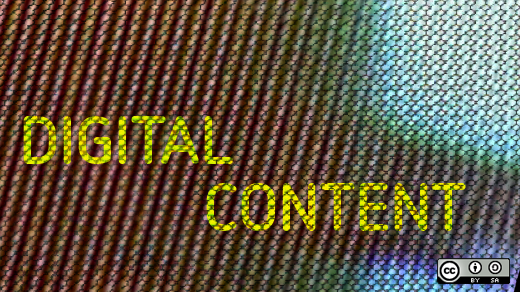It's common to see a software app stand still—no new versions, no updates. Eventually, it gets overtaken by advancing technology and its user base drifts away. Open source software is not immune to this fate, but it is easier to revive than commercial software, where optimistic accountants cling to the hope that it still holds financial value.
eXeLearning (also called eXeLearn, or eXe), an open source XHTML editor that was created with support from Auckland University of Technology, University of Auckland, and Tairawhiti Polytechnic, achieved a measure of popularity among its target audience. The introduction to the version 1 manual described it as "an authoring environment to assist teachers and academics in the design, development, and publishing of web-based learning and teaching materials without the need to become proficient in HTML or complicated web-publishing applications." Despite a few annoying glitches, I liked and recommended that program. However, development stalled around 2010 and eXeLearning fell off my recommended list. eXeLearning is back on my list now.
In 2009-2010, seeing that eXeLearning was not evolving, the Instituto de Tecnologías Educativas del Ministerio de Educación del Gobierno de España (INTEF) decided to restart and develop the project. The latest version is 2.1.3, and many of the things that did not work well in the first incarnation have been fixed.
The eXeLearning source code contains a variety of third-party libraries such as jQuery. While purists may be dismayed by the ten different licenses listed in the legal notices, in practice half of these are iterations of the General Public License (GPL). The result is an open source cross-platform web application (written in Python and Ext JS) that users can run in their default or preferred browser.
Open source advocates will appreciate that content created with eXeLearning is given a Creative Commons Attribution-ShareAlike license by default.

You use a tree diagram to build a course and organize the content up into topics. These can be split again into sections and units (see the figure below). You must use all the levels and can name them anything you like.
eXeLearning comes with a wide range of built-in styles, but you can import new styles or create your own.

Content is made from a list of iDevices (see below) and can be placed at any level. Many of the iDevices use the same editor, which lets you mix linked or embedded images and videos, math equations, and text to create a user experience. These built-in building blocks are all you need to create most projects, but you can also create new iDevices of your own. Once you’ve included an iDevice, it’s easy to move or copy to any other part of your course.

Once finished, you can export the course to SCORM 1.2 (Shared Content Object Resource Model), the de facto standard for importing to LMS/VLE (learning management system/virtual learning environment) systems such as Moodle. Plenty of other export options are also available, as shown below:

There are some weaknesses in the export process. The exported HTML code, for example, is standard-compliant and fairly clean, but eXeLearning dumps all of the exported files into a single folder rather than placing the graphics into a separate sub-folder. The exported HTML works, but putting everything in one folder, particularly with larger projects, makes the export harder to understand and maintain than it should be. Creating a new folder for images and manually moving the image files and editing the HTML code defeats the aim of eXeLearning: making things easy.
eXeLearning has also exported a full set of icon images and common files, regardless of if they are used or not. The files are small and take little space, but this may be annoying if you're used to having full control over every aspect of your projects.
eXeLearning has been translated into a number of different languages, but much of its documentation is available only in Spanish. An English language guide to eXeLearning 2 is available at visimpscot.
eXeLearning faces a crowded marketplace for e-learning content creation tools, with plenty of commercial and hosted service competitors. Here's what makes this program stand out:
- It is free, cross-platform, and open source
- The underlying design philosophy has been tested over more than ten years, striking a balance between flexibility and ease of use.
- It promotes the use of Creative Commons licenses
Overall, eXeLearning is a valuable tool for educators who want to produce digital content and for instructional designers looking for a RAD (rapid application development) environment. While there's room for improvement, the program is up with or ahead of similar software aimed at the same market.
Disclosure: Since writing this article, I have been invited to join the eXeLearning development team. Looks like I'm losing the easy privileges of an armchair critic.







Comments are closed.